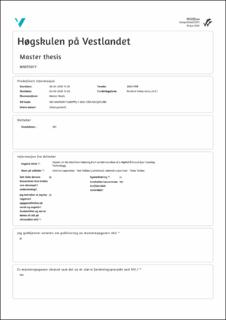| dc.description.abstract | The Master's thesis "Impact on the Maritime Industry from an Introduction of a Hybrid Exhaust Gas Cleaning Technology" has been written because of the recent changes in the international regulations for air pollution prevention from ship engine exhaust gasses, limiting the maximum allowable sulphur content in fuels. The work is devoted to a novel exhaust gas cleaning technology which plans to integrate a particle accelerator into existing exhaust gas cleaning devices to form a hybrid system, which would be able to deal with SOX, PM and NOX emissions according to the international regulations.
This thesis contributes with overall evaluation of the novel hybrid system to be installed on board a vessel including safety aspects, an analysis of the technology development risks and determination of impacts on the maritime industry from its introduction to the market. This work consists of 6 chapters, beginning with an introduction, which gives an overview of the latest international regulations, proposes a compliant solution, which is the research subject, and defines the tasks and scope of this work.
The second chapter gathers the most relevant international-scale regulations for exhaust gasses in the marine transport, as well as regional and national level restrictions. In the meantime, the chapter also includes respective compliance methods, mostly focussing on certification and exploitation of exhaust gas cleaning systems.
In the third chapter, evaluation of the most common exhaust gas cleaning technologies is carried out.
The fourth chapter describes the proposed hybrid technology. Here, results from laboratory tests are presented, as well as the outcome from the experiment at Riga Shipyard, cleaning exhaust gasses from a tugboat.
In the fifth chapter, a risk assessment with respective preventive and corrective actions is carried out for further technology development using PESTLE analytical template. The strengths and the weaknesses of the hybrid system are gathered and discussed in the SWOT matrix, closing with the impact on the maritime industry.
The thesis is concluded by summarizing the most important obstacles in development of the hybrid technology, as well as its expected impact on the maritime industry. The thesis comprises 80 pages, counting in the introductory part, list of bibliography with 78 references and 4 appendices. The work also includes 30 figures and 6 tables. | en_US |

